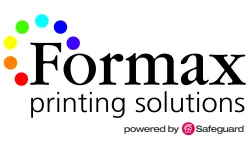Creating Books and Manuals for Use in Damp or Dirty Environments
The cover and pages of most bound documents - books, manuals, reference guides, etc. - are constructed from paper. When used in a clean and dry environment, paper remains quite durable and useable for a very long time.
However, there are certain circumstances that require a bound document to be repeatedly exposed to potentially damaging contaminants. These include-�
- Books that will be used where moisture may be present - examples include instruction manuals or operation guides used within a commercial kitchen, a water treatment plant, aboard a floating vessel, or any other application where water, liquid, or humidity is prevalent.
- Books that will be used in dirty or greasy conditions - examples include repair or maintenance manuals for machinery and industrial equipment, or any bound document designed for use within a manufacturing plant, machine shop, vehicle repair shop, construction job site, or any similarly tough environment.
- Books that are intended to be used outdoors - examples include nature and field guides used to help identify various species or objects, such as birds, insects, plants, rocks, seashells and such. Other examples include outdoor survival guides or first aid manuals, or even guidebooks to help navigate and explore a park or locale. Because these books are used primarily out-of-doors, they could easily get soiled with dirt, mud or moisture.
What is the Solution?
The solution to protecting bound documents from moisture and contamination is encapsulation. The cover and pages must be completely encapsulated within a clear plastic "sealed-edge" laminate.
A sealed-edge is created when a printed piece is sandwiched between two pieces of plastic laminate film that extend past the edge of the printed piece. This allows the two sheets of film to bond to each other around the entire perimeter, thus totally encapsulating each printed sheet in plastic.
The overhang lip created by the sealed-edge method is usually in the range of 1/8" to 1/2" in order to produce a strong bond and ensure that fluids and dirt never contact the printed paper substrate. Also, because strength and durability are important considerations for books used in a rugged environment, the laminate film used to encapsulate the cover and pages should be quite thick, such as a 5 mil or 10 mil thickness.
Which Binding Method to Use?
Now that we know sealed-edge encapsulation will provide the cover and pages with the ultimate protection against contaminants, the binding style is the next important consideration.
Spiral Coil binding or Wire-O binding is the ideal binding method for maintaining the integrity of an encapsulated book. By extending the sealed-edge laminate well past the binding edge of the cover and pages, the holes for the coil or Wire-O can be punched so that they penetrate the laminate only, not the paper substrate. This allows the cover and pages to be professionally bound together while maintaining the integrity of the moisture and dirt barrier. This binding method works well with either the 5 mil or 10 mil laminate.
In addition, there are a couple other benefits to using coil or Wire-O binding for instruction or maintenance manuals, reference books, field guides and related documents-�
- The pages can be opened a full 360 degrees - this allows the book to fold all the way back upon itself and yet still remain flat, thus providing an easier way to reference the material in the book. Also, because the book can open fully, it prevents important information from getting buried near the book's spine.
- The pages turn easily and stay put - the laminated cover and pages of a spiral or Wire-O bound book rotate around the coil with very little resistance. So unlike other binding styles, coil bound pages have no spinal tension in them. This allows the pages to stay put without having to be continually held open with both hands to view the content.
Formax specializes in book printing and lamination, so if you have a need for books, manuals, field guides or other bound documents that will be used in a damp or dirty environment, give us a call at 866-367-6221. We will professionally print, encapsulate, assemble, and bind your multi-page documents to your exact specifications.
Tags: Book Laminating, Clear Lamination, Coated Book, Encapsulation Printing, Field Guide, Gloss Encapsulation, How to Protect Books, Laminate Book, Laminated Books, Laminated Printing, Laminated Reference Guides, Nature Guide, Outdoor Book, Outdoor Manual, Park Guide, Pocket Field Guide, Print Encapsulation, Protect Book, Waterproof Survival Guide
